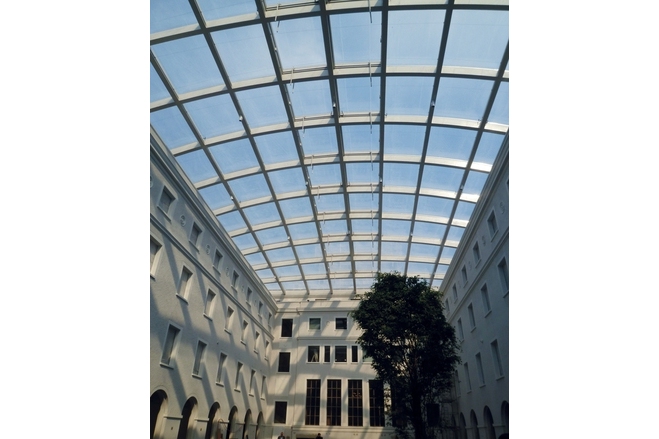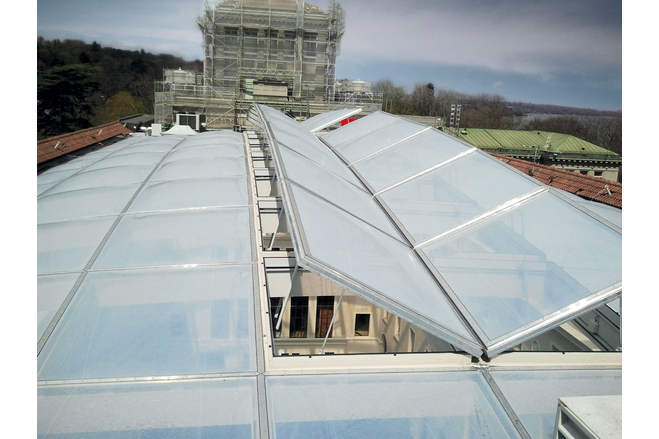Courtyard of the Centre William Rappard
General information
-
Location address
Geneva
-
Location country
Switzerland
-
Year of construction
2012
- Function of building
-
Degree of enclosure
Fully enclosed structure
-
Climatic zone
Temperate - cold winters and mild summers
-
Number of layers
multi-layer
Description
As with all building projects for UN organisations, strict regulations applied for the WTO project with regard to energy efficiency. The tender stipulated compliance with the Swiss MINERGIE-P standard defining low-energy construction methods. The permissible values correspond with those for a 3-litre house (heating oil consumption averages only 3 litres per square meter per year). The original building’s open inner courtyard planted with trees now features a transparent roof made of pneumatically-supported, triplelayered foil cushions affording extremely good heat insulation properties. The foil cushions were calculated and constructed by Swiss company Texlon, aspecialist in hangar construction as well as foil and membrane constructions.
The roof is formed of a total of 104 triple-layered foil cushions of which 22 feature an opening mechanism. The cushions lend the domed roof a distinctive curved form. Due to the special steel support structure, Texlon calculated a total of 26 different three-dimensional cuts and forms for the foil cushions of around 3m x 3,5m in size. For the WTO roof, Texlon sought to further develop the profiles commonly used. This further development enabled the fitters to make fine adjustments while clipping the foils in place as well as allowing for easier re-tensioning.
These foil cushions weigh about 95 percent less than a comparable glass construction, and their extremely fine support structure enables unbroken views of the skies over Geneva. The foils allow both visible light and the ultraviolet UV-A light essential to plants to penetrate virtually unfiltered.
The foils were extruded by Siegsdorf-based specialists Nowofol Kunststoffprodukte GmbH & Co. KG. The NOWOFLON ET 6235Z foils come in a thickness of 12-300ìm. This high-performance material from the fluoropolymers family affords virtually universal chemical resistance and meets the B1 fire class criteria (according to DIN 4102).
Description of the environmental conditions
Material of the cover
-
Cable-net/Fabric/Hybrid/Foil
Foil
-
Material Fabric/Foil
NOWOFLON ET 6235Z
Main dimensions and form
Duration of use
-
Temporary or permanent structure
Permanent
-
Design lifespan in years
31-..
Editor
-
Editor
Evi Corne



